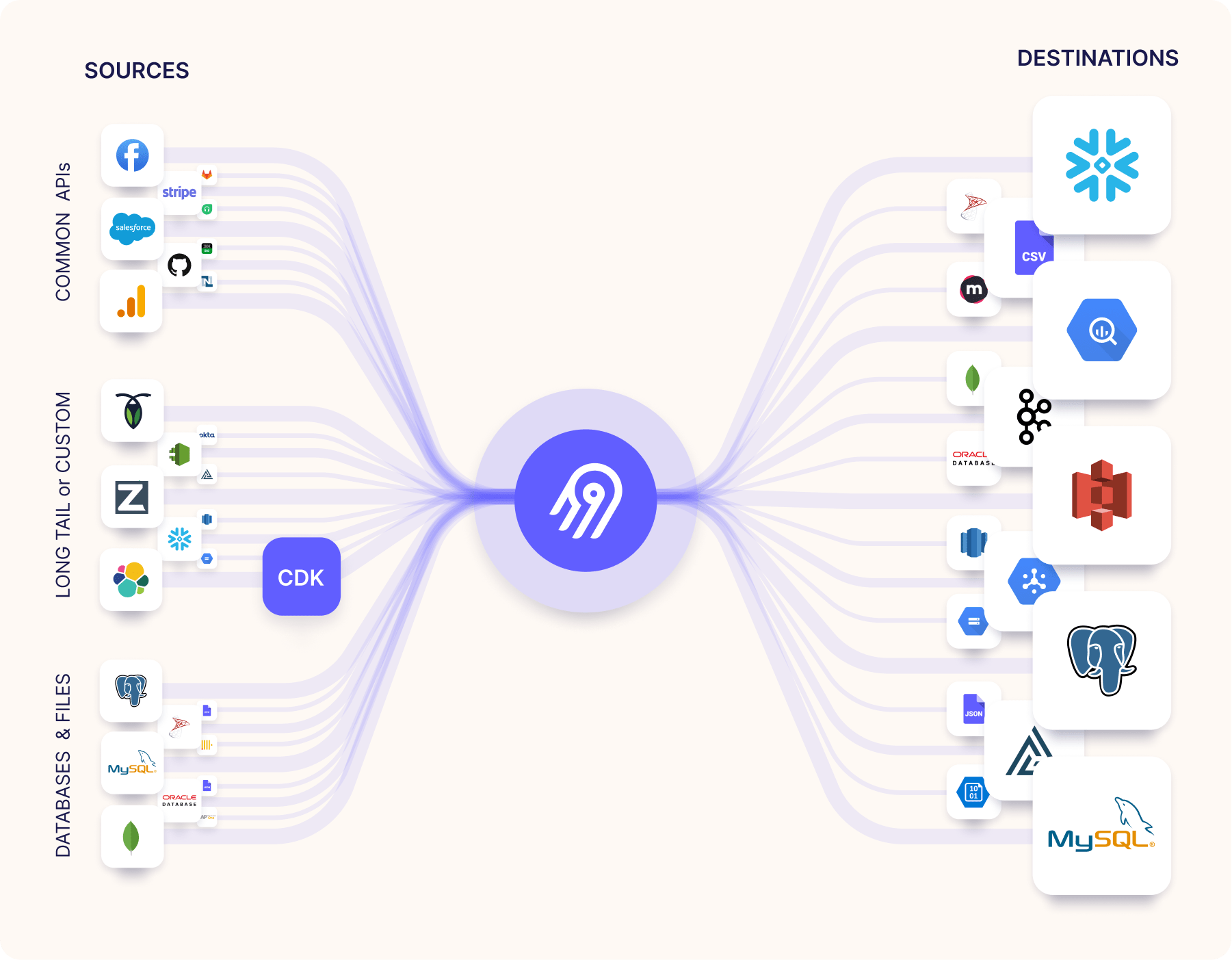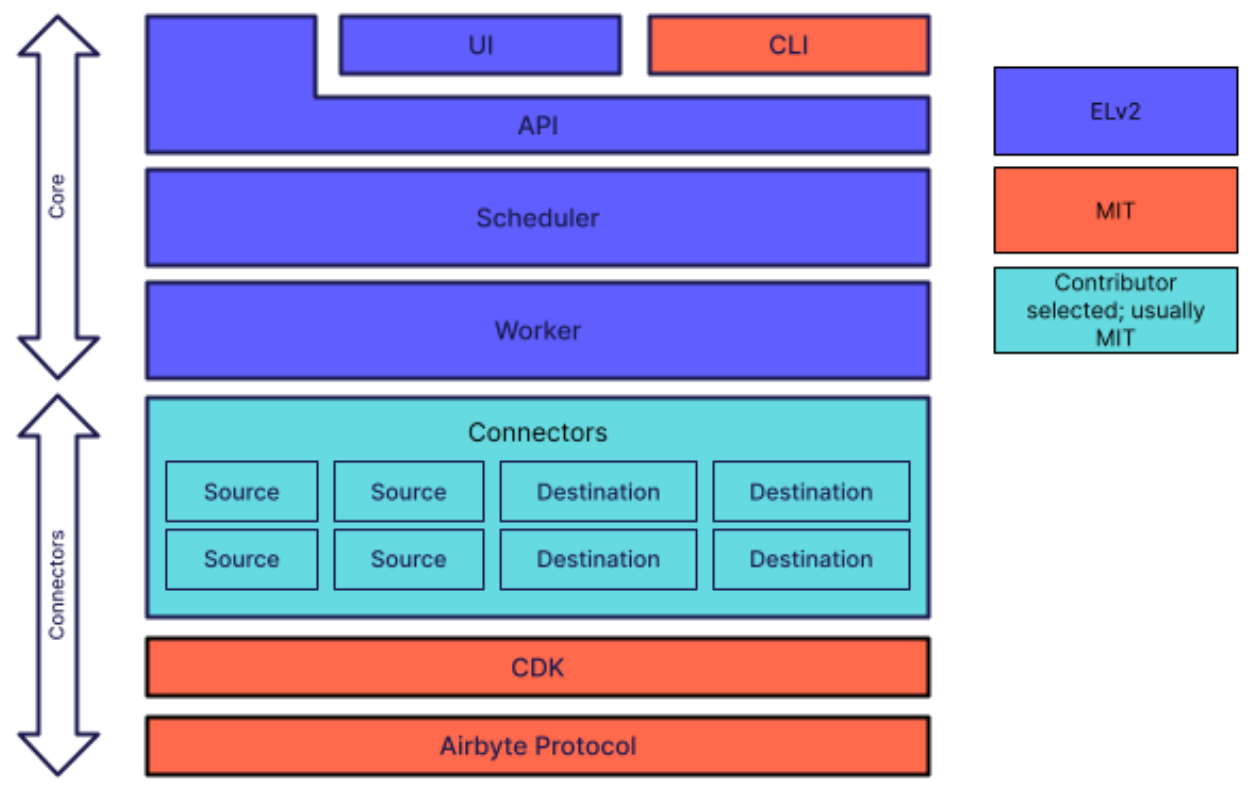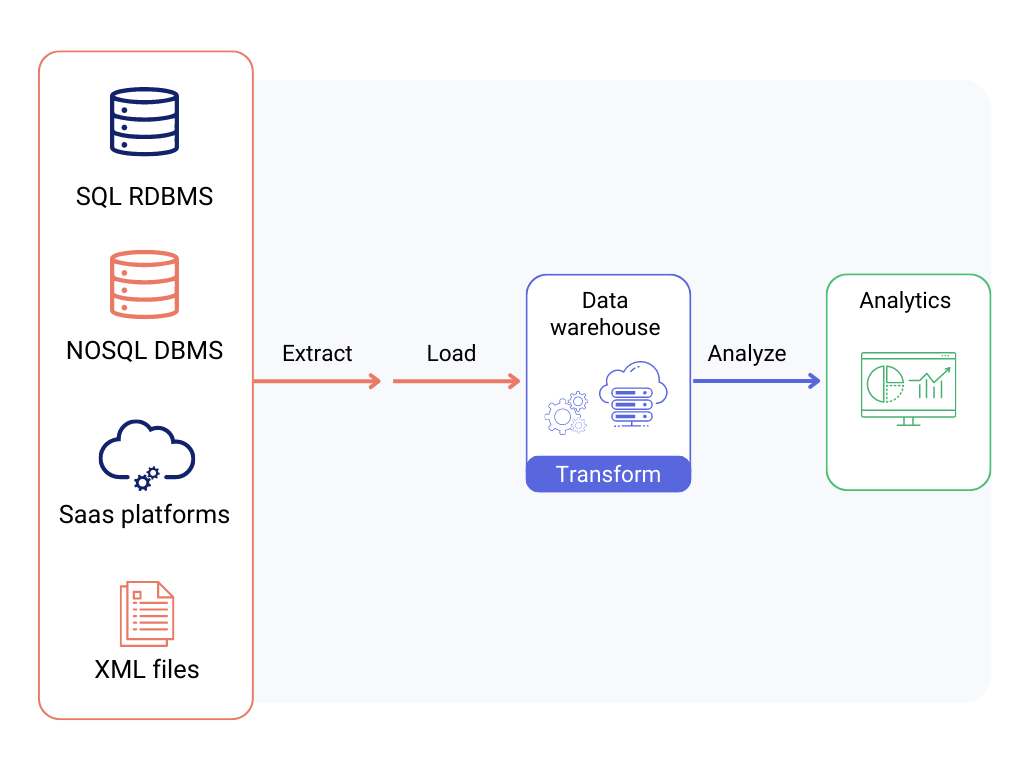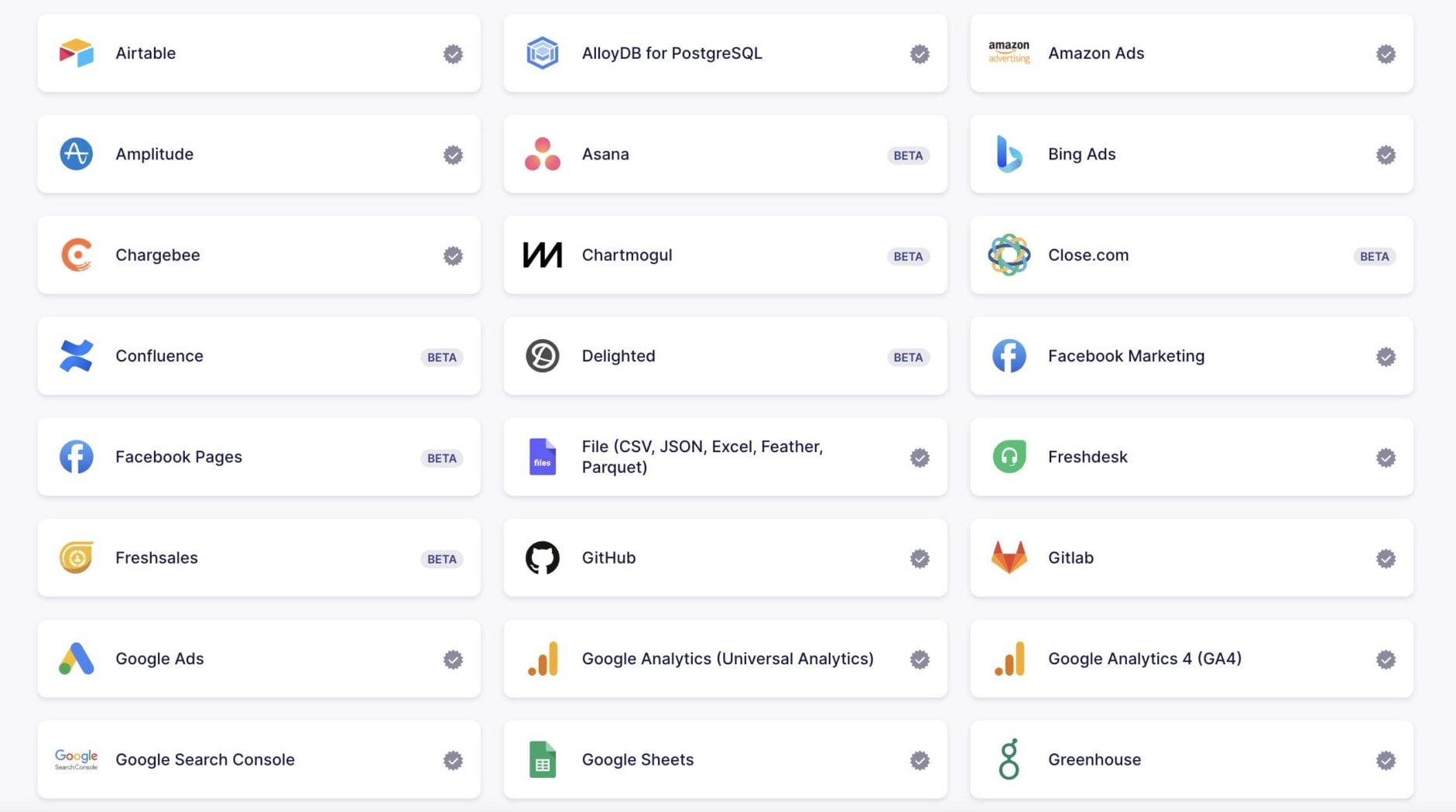Introduction
In today’s data-driven world, seamless data integration is crucial for businesses striving to harness the power of their data. Whether it’s consolidating data from multiple sources, ensuring data consistency across platforms, or preparing data for advanced analytics, an efficient data integration tool is a game-changer. Open-source data integration tools, in particular, offer significant advantages due to their flexibility, scalability, and community-driven enhancements. This blog will explore the benefits and features of open-source data integration, highlight potential use cases, and use Airbyte as a prime example of an open-source tool that simplifies the process of moving data from any source to any destination.
The Power of Open-Source Data Integration
Open-source data integration tools provide organizations with the ability to manage and manipulate data without the constraints of proprietary software. Here’s why open-source solutions are gaining traction:
Benefits of Open-Source Data Integration
- Flexibility: Open-source tools can be customized to fit specific business needs. Unlike proprietary software, which often comes with limitations and rigid structures, open-source platforms can be tailored to integrate unique data sources and perform specialized transformations.
- Cost-Effectiveness: By eliminating licensing fees, open-source solutions reduce the total cost of ownership. This makes advanced data integration capabilities accessible to organizations of all sizes, from startups to large enterprises.
- Community Support: Open-source projects benefit from the contributions of a global community of developers. This results in continuous improvements, regular updates, and a wealth of shared knowledge and best practices.
- Transparency and Security: Open-source software allows users to inspect the code, ensuring transparency and security. This visibility helps organizations identify and address vulnerabilities promptly.
- Scalability: Open-source data integration tools are designed to handle large volumes of data, making them ideal for growing businesses. Their scalable architecture ensures they can accommodate increasing data loads without compromising performance.
Key Features of Open-Source Data Integration Tools
- Wide Range of Connectors:
- Open-source data integration tools often come with extensive libraries of connectors that support various data sources and destinations. This versatility ensures seamless integration across different platforms, databases, APIs, and cloud services.
- Customization
- The flexibility of open-source tools allows users to create custom connectors and transformations. This capability is crucial for integrating unique data sources and meeting specific business requirements.
- Scalability
- Designed to handle high data volumes, open-source data integration tools can scale with your business. This ensures smooth and efficient data integration processes as your data needs grow.
- Ease of Use
- With user-friendly interfaces and comprehensive documentation, open-source tools are accessible to users with varying levels of technical expertise. Intuitive design and detailed guides simplify the setup and configuration process.
- Real-Time Integration
- Many open-source data integration tools support real-time data syncing, ensuring that your data is always up-to-date. This is vital for applications that rely on current data, such as real-time analytics and monitoring systems.
- Error Handling and Monitoring
- Robust error handling mechanisms and monitoring tools help maintain data integrity. Automated alerts and detailed logs allow users to quickly identify and resolve issues, ensuring reliable data flows.
An Example of Open-Source Data Integration
- Airbyte is an exemplary open-source data integration platform that demonstrates the power and potential of open-source solutions. With its modular architecture and extensive connector library, Airbyte simplifies the process of extracting, transforming, and loading (ETL) data.
- Airbyte is an open-source data integration platform designed to help organizations easily sync data across a variety of sources and destinations. With its modular architecture and extensive connector library, Airbyte simplifies the process of extracting, transforming, and loading (ETL) data.
- Below is the visual representation of Airbyte

- Airbyte takes the concept of ingestion to the next level. It’s designed to handle a wide array of data sources, ensuring seamless integration and transfer. With its adaptability and robust connectors, Airbyte makes data ingestion a streamlined experience, accommodating diverse data formats and connections, and laying a strong foundation for the entire data platform.
- The concept of Connectors from various sources to destinations along with data syncs (Incremental and Full) is what makes Airbyte one of the best choices for Data Ingestion.
- Refer the below image for the architecture of Airbyte

Key features:
- Wide Range of Connectors: With support for over 200 source and destination connectors, including popular Databases, Data-Warehouses, APIs, and cloud services, Airbyte offers unparalleled versatility. Whether you need to integrate with major data platforms like PostgreSQL, MySQL, or Salesforce, or niche APIs, Airbyte has you covered. This extensive library ensures you can handle any data integration task without hassle, making your data integration processes seamless and efficient. Below are some of the connectors available.

- Customization: Airbyte’s flexibility allows users to easily create custom connectors to meet their specific integration needs. No matter how unique or specialized your data source is, Airbyte empowers you to build tailored connectors. This customization capability ensures that you can integrate even the most unique data sources effortlessly, enhancing the overall data integration experience.
- Scalability: Designed to handle large volumes of data, Airbyte scales with your business, accommodating growing data integration demands. As your business expands and your data needs increase, Airbyte’s scalable architecture ensures it can manage high data loads without compromising performance. This scalability guarantees that your data integration processes remain smooth and efficient, no matter the size of your business.
- Open Source: As a community-driven project, Airbyte benefits from regular updates and enhancements, ensuring it stays current with industry needs. The open-source nature of Airbyte means it continuously evolves with contributions from a global community of developers. This constant innovation keeps Airbyte at the cutting edge of data integration technology, providing you with the latest features and improvements.
- Ease of Use: With a user-friendly interface and comprehensive documentation, Airbyte is accessible even to those without extensive technical expertise. Its intuitive design simplifies the setup and configuration process, allowing you to get started quickly and efficiently. Detailed guides and supportive community forums make troubleshooting and learning easy, ensuring you can maximize Airbyte’s potential with minimal effort.
Data Integration Capabilities:
Airbyte’s capabilities make it a versatile tool for various data integration scenarios:
- Data Synchronization: Airbyte excels at regularly syncing data from different sources to ensure data consistency across your systems. This is vital for maintaining accurate and up-to-date information across your business. For example, if you are running an e-commerce platform, Airbyte can continuously sync customer orders, inventory levels, and product information from various sales channels and warehouses. This synchronization ensures that every part of your operation, from sales to supply chain management, has access to the latest data, preventing issues such as stock-outs or miscommunication with customers.
- ELT Processes: Simplify complex ELT (Extract, Load, Transform) workflows with Airbyte’s pre-built connectors and transformations. Airbyte handles the heavy lifting of data extraction from various sources, transformation into the required format, and loading into your target destination. This means you can focus on deriving insights from your data rather than spending time on the technicalities of data integration. For instance, a marketing team can use Airbyte to extract data from Google Analytics, transform it to align with their internal data schema, and load it into a data warehouse for detailed analysis, enabling better campaign performance tracking and decision-making. Below is a visual representation of the same

- Data Consolidation: Airbyte combines data from multiple sources into a single, unified data warehouse, facilitating better analytics and reporting. By centralizing your data, you can perform more comprehensive and accurate analyses, leading to improved decision-making. For example, a retail business can consolidate sales data from various channels to gain a holistic view of performance, enabling more strategic inventory management and marketing campaigns.
- Real-time Data Integration: Supporting real-time data syncing, Airbyte ensures your data is always up-to-date. This is crucial for applications that rely on the most current data available, such as real-time analytics dashboards, fraud detection systems, and live monitoring tools. Real-time integration enables businesses to respond quickly to emerging trends and issues, maintaining a competitive edge in fast-paced environments.
- Error Handling and Monitoring: Airbyte’s robust error handling mechanisms and monitoring tools help maintain data integrity and provide peace of mind that your data integration processes are running smoothly. Automated alerts and detailed logs allow you to quickly identify and resolve any issues, minimizing downtime and ensuring reliable data flows. This reliability is essential for maintaining the trust and accuracy of your data-driven operations.
Potential Use-Cases:
Airbyte can be utilized in various industries and scenarios to address unique data integration challenges:
- E-commerce: In the e-commerce sector, customer data is often scattered across various platforms such as Shopify, WooCommerce etc. Airbyte enables you to sync this data into a centralized CRM system, providing a unified view of your customers. This comprehensive customer profile can enhance personalized marketing efforts, improve customer service, and streamline operations by ensuring all departments have access to the latest customer information.
- SaaS Applications: For SaaS companies, maintaining data consistency across different applications is critical for ensuring seamless user experiences. Airbyte helps sync user data across various SaaS applications, such as CRM, billing systems, and customer support platforms. This synchronization ensures that user information is consistent and up-to-date across all touch-points, enhancing user satisfaction and operational efficiency.
- Data Engineering: Data engineers often need to manage and integrate data from multiple sources to build data pipelines for analytics and machine learning projects. Airbyte simplifies this by providing a wide range of connectors and easy customization options. This enables data engineers to create robust data pipelines that extract, transform, and load data efficiently, accelerating the development of data-driven applications.
- Marketing: Marketing teams often need to aggregate data from various sources, including Google Analytics, Facebook Ads, and email marketing platforms, to optimize campaign performance. Airbyte simplifies this process by centralizing marketing data into a single analytics platform. This holistic view enables marketers to track campaign performance in real-time, identify trends, and make data-driven decisions to improve ROI and customer engagement.
Introducing Our AWS Marketplace Products
To help you harness the power of Airbyte for your data integration needs, we offer two comprehensive solutions on the AWS Marketplace:
- Easy Data Integration: Any Source to Destination (Enterprise Edition): This edition is designed for large-scale enterprises that require robust data integration capabilities. It includes advanced features such as Secure (Private Environment), Auto-Scaling, Load-Balancing etc. making it ideal for businesses with extensive data integration needs.
- Who should subscribe to the Enterprise Offering?
- Large Enterprises: Companies with extensive data integration needs, high-volume data processing requirements, and complex data workflows.
- Data Teams and Departments: Organizations with dedicated data teams or departments that manage large datasets across various sources and require advanced features for efficient data management.
- Growing Businesses: Businesses anticipating significant growth in their data integration demands, needing a scalable and robust solution that can handle increased data loads without compromising performance.
- Access the product here: Easy Data Integration: Enterprise-Edition
- For detailed setup instructions and more information on how to get started for the Enterprise offering, visit our Easy Data Integration: Enterprise Edition Setup Guide
- Who should subscribe to the Enterprise Offering?
- Easy Data Integration: Any Source to Destination (Single-Node Edition): This edition is ideal for smaller businesses or individual projects that need reliable data integration without the complexity of an enterprise setup. It includes features such as Secure (Private Environment), Single-Node setup, HTTPS with CloudFront distribution etc. It provides a streamlined solution for businesses looking to integrate data efficiently and cost-effectively.
- Who should subscribe to the Single-Node Offering?
- Small to Medium-Sized Businesses (SMBs): Companies with more straightforward data integration requirements, looking for a cost-effective solution to manage their data integration tasks without the need for a multi-node setup.
- Individual Projects: Ideal for startups or individual projects that need reliable data integration capabilities on a smaller scale.
- Test and Development Environments: Suitable for teams that want to test and develop their data integration processes before scaling up to a larger, more complex environment.
- Access the Product here: Easy Data Integration: Single-Node edition
- For detailed setup instructions and more information on how to get started for the Single-Node offering, visit our: Easy Data Integration: Single-Node Edition Setup Guide
- Who should subscribe to the Single-Node Offering?
Both products leverage the power of Airbyte, running on an AMI, and come with a CloudFormation template to easily deploy the necessary infrastructure on AWS. With our detailed setup guides, you can quickly subscribe, launch, and start integrating data seamlessly.
Conclusion:
Open-source data integration tools offer unparalleled flexibility, cost-effectiveness, and community support, making them an excellent choice for businesses looking to harness the power of their data. Airbyte exemplifies these benefits, providing a robust, scalable, and user-friendly platform for seamless data integration. By leveraging open-source tools like Airbyte, businesses can streamline their data integration processes, ensuring accurate, up-to-date information across all their systems, and ultimately driving better decision-making and improved outcomes. Transform your data workflows today with Airbyte and experience the benefits of seamless data integration.

